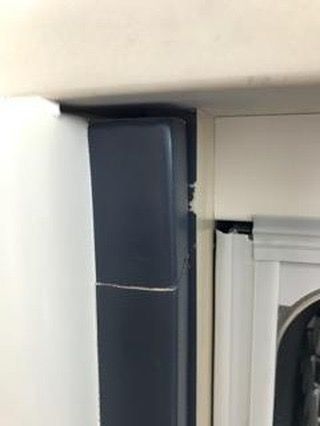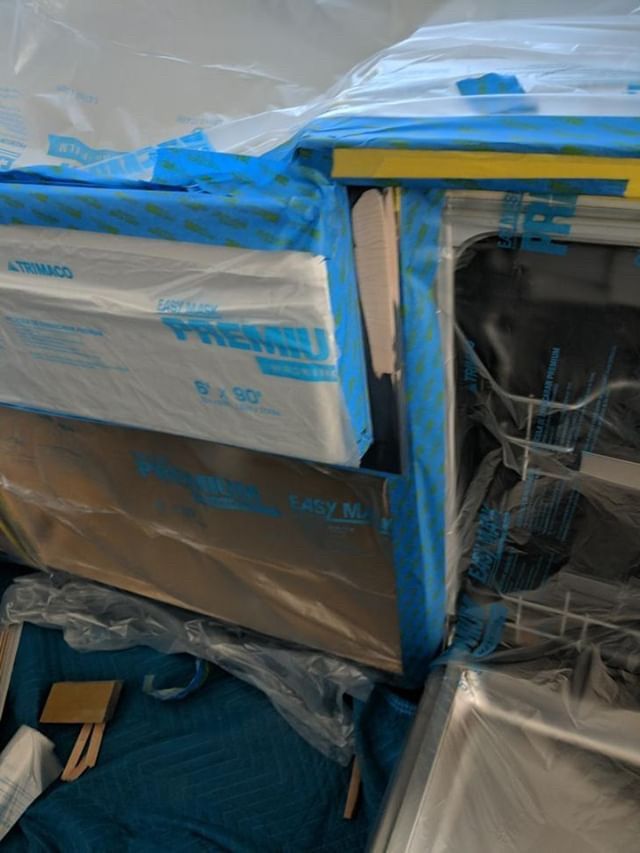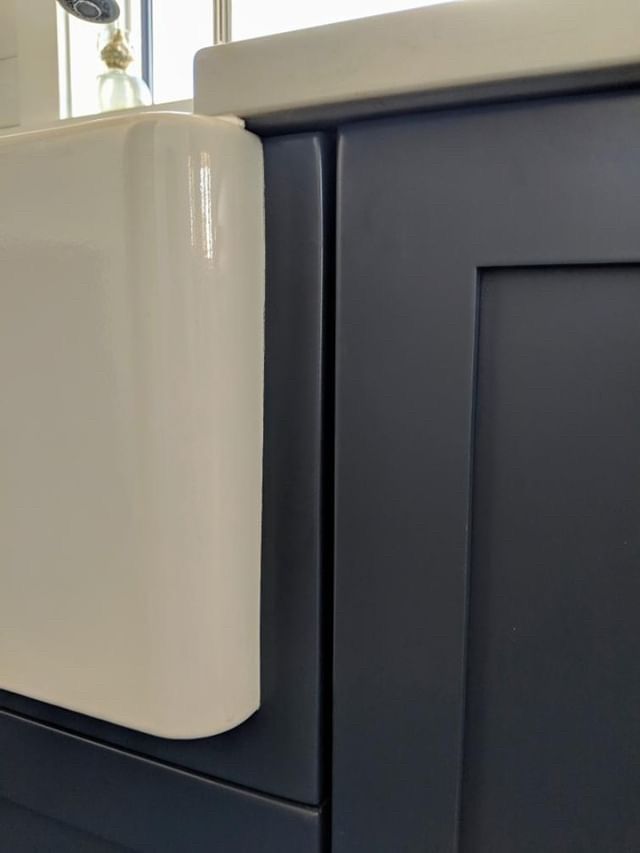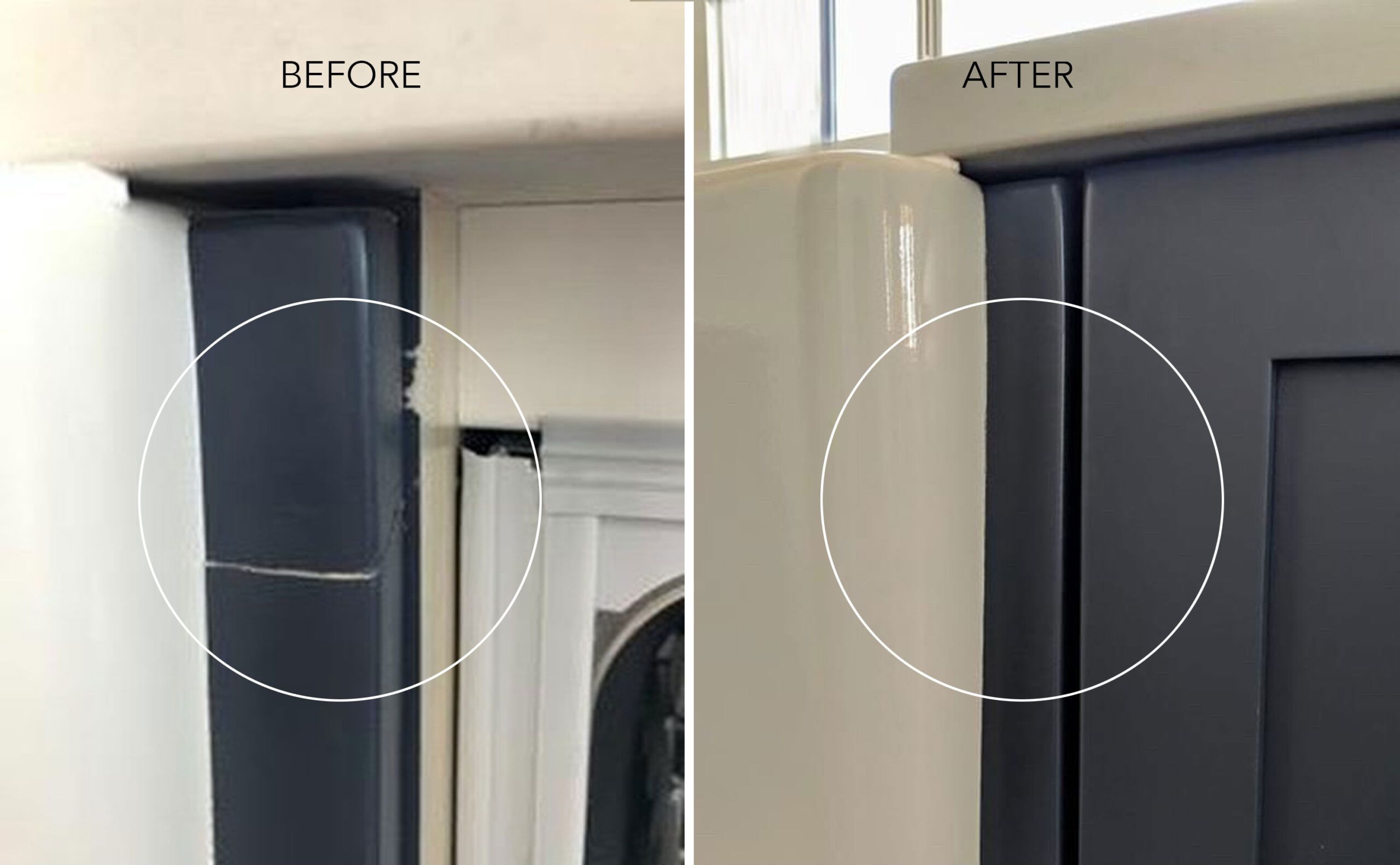Cabinet repairs can be challenging, especially when you’re dealing with custom kitchen cabinets that have already been installed. This article explores a real-world scenario where a master cabinet installer discovered a cracked panel and had to come up with a solution. We’ll dive into the repair process and provide tips for getting professional-grade results with budget-friendly tools.
The Problem: A Cracked Panel
During a custom kitchen cabinet installation, master cabinet installer Jon Hilgenberg found a crack just to the right of the farmhouse-style sink. The crack was caused by the panel’s assembly method and the modifications made to accommodate the sink. This revealed some inherent problems with the panel construction.

The crack occurred along a glue line in a vulnerable area of the panel. The panel was initially constructed by gluing boards and attaching them to the cabinet. After installation, it was cut to fit the sink, resulting in thin strips with horizontal grain on the sink’s sides. This issue created both a functional and aesthetic challenge and called for a creative solution.
Preferred Construction Method
Hilgenberg prefers a different approach for panels supporting farmhouse-style sinks. His ideal method involves creating panels with vertically oriented grain on the sides. He explains, “Instead of making a solid panel, you make a U-shaped piece with horizontal grain on the bottom rail and two vertical stiles.”
This technique gives you better stability and reduces the risk of cracking, especially in areas subject to moisture and stress. The vertically oriented grain is stronger, better distributing weight and resisting the pull of gravity over time. This approach is a good choice in a kitchen where the panel will be exposed to water more often.
The Repair Process
Given that the cabinets were already installed and the kitchen was nearly complete, replacing the entire panel would have required removing the sink—a time-consuming and potentially disruptive option. Instead, Hilgenberg devised an on-site repair strategy to fix the broken “stile” without disturbing the overall setup.
Here’s a step-by-step breakdown of the repair process:
- Glue application: Hilgenberg carefully applied glue to the cracked joint, ensuring even coverage to bond the split sections effectively.
- Clamping: He used shims above and below the panel to clamp the glued area securely, providing uniform pressure across the joint.
- Drying: Hilgenberg allowed the glue to dry completely, establishing a solid bond that restored the panel’s structural integrity.
- Filling imperfections: Once dry, Hilgenberg filled any remaining imperfections with Bondo, a versatile auto body filler that works well for wood repairs and offers a smooth finish.
- Sanding: The repaired area was sanded smooth to prepare for priming and painting.
- Priming: Two coats of shellac-based primer were applied with fine-grit sanding between coats.
- Painting: Two coats of custom-matched paint, provided by the cabinet shop, were applied to blend the repair seamlessly with the surrounding cabinetry.

Professional Results on a Budget
One of the most impressive aspects of this repair is the high-quality finish that Hilgenberg was able to get without using expensive equipment. Hilgenberg doesn’t own a professional spray gun, which might seem like a requirement for such a precise job. Instead, he relied on a budget-friendly alternative: the Preval Sprayer.

The Preval Sprayer, priced at around $10 per can, allowed Hilgenberg to achieve professional-grade spray gun results for this small repair. Using this tool, he was able to match the cabinet’s texture and color precisely. The sprayer’s versatility makes it an excellent choice for homeowners and professionals looking for efficient and effective repair solutions.
Tips for Successful Cabinet Repairs
When tackling cabinet repairs, follow these tips to get attractive, professional-looking results:
- Assess the damage: Carefully evaluate the extent of the damage before deciding on a repair strategy, ensuring that your chosen method will efficiently address the issue.
- Choose the right materials: Select appropriate adhesives, fillers, and finishes that are compatible with the existing cabinet materials to ensure a cohesive repair.
- Consider alternative tools: Don’t be afraid to use budget-friendly alternatives, such as the Preval Sprayer, which can yield professional results without the need for expensive equipment.
- Match the finish: Use custom-matched paint or stain to ensure the repair blends seamlessly with the surrounding cabinetry and maintains a uniform look.
- Take your time: Rushing through a repair can lead to subpar results. Allow adequate drying time between steps to ensure each stage sets properly.
What Can You Do To Prevent Future Cabinet Damage?
Consider these preventive measures to minimize the risk of similar issues in the future. Proper installation and maintenance can significantly extend the lifespan of your kitchen cabinets:
- Gentle use: Educate household members on proper cabinet care to prevent accidental damage. Avoid slamming doors and overloading shelves, which can strain the cabinet structure.
- Proper installation: Ensure cabinets are installed correctly with adequate support and proper alignment to prevent stress points that can lead to damage over time.
- Moisture protection: Apply a water-resistant sealant to areas prone to moisture exposure, such as around sinks, to protect the wood from water damage and warping.
- Regular maintenance: Inspect cabinets periodically for signs of wear, loose hardware, or developing cracks. Address issues promptly to prevent further damage.
Jon Hilgenberg is a cabinet installer living in Charleston, South Carolina. Follow him on Instagram @jchcabinets.

